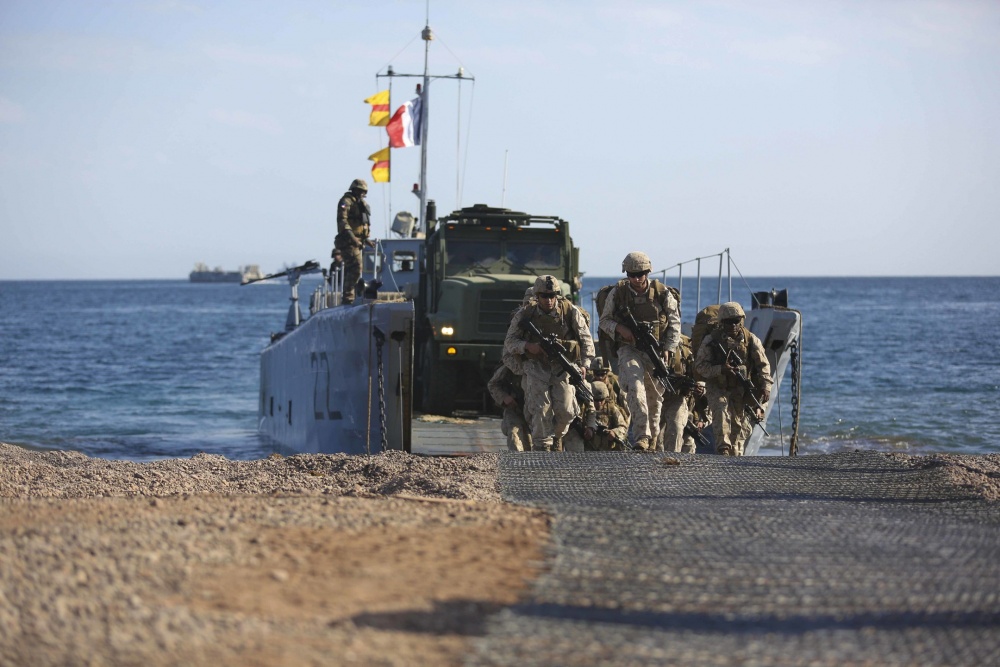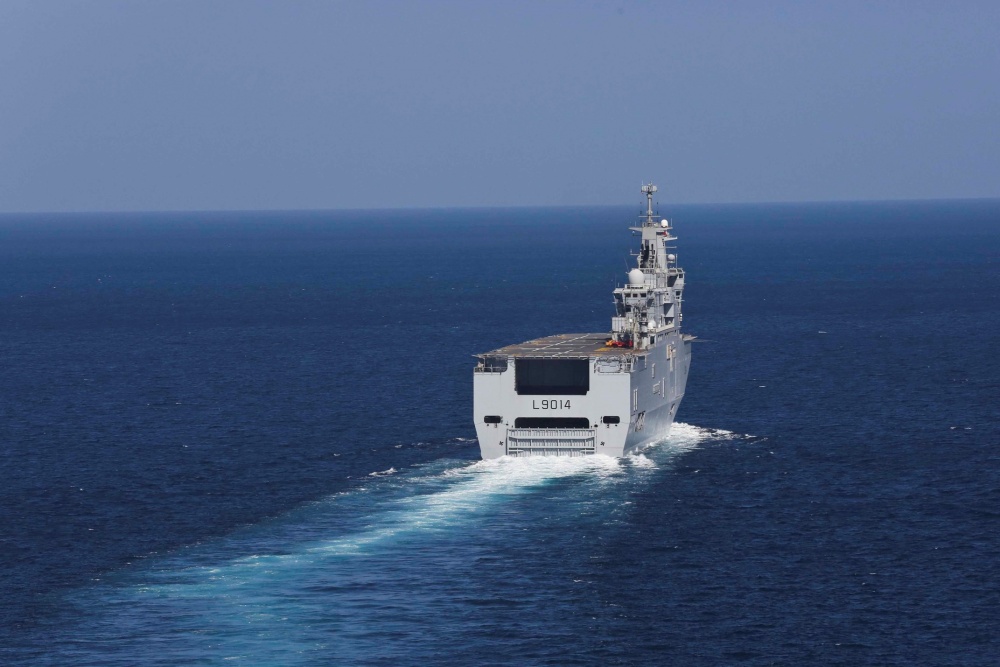
About 1,000 sailors and Marines from the United States and France trained together in the annual Alligator Dagger amphibious exercise, in the first time France has been brought into the unilateral exercise off the coast of Djibouti.
U.S. sailors and Marines from the 15th Marine Expeditionary Unit, along with the crews of the French Mistral-class amphibious assault ship Tonnerre (L9014) and the new expeditionary sea base USS Lewis B. Puller (ESB-3), rehearsed amphibious operations and combat sustainment at sea and ashore in the exercise scheduled to run from Dec. 12 to 21, according to a news release from Naval Amphibious Force, Task Force 51/5, 5th Marine Expeditionary Brigade.
After a two-year agreement was signed in May 2016, the staffs of Commander Task Force-51 Naval Amphibious Force and 5th Marine Expeditionary Brigade combined into a single integrated naval headquarters called TF-51/5. Alligator Dagger is the largest exercise TF-51/1 coordinates.
As a way of commemorating the 100th anniversary of World War I and honoring the sacrifices and fighting spirit of the U.S. Marines during the second battle of the Marne, the deployment is named “Bois Belleau 100,” according to the news release.
“The U.S. and the French share an esteemed military history of cooperation that dates back more than two centuries, including France’s support of U.S. independence during the American Revolutionary War. Having TF 51/5 Sailors and Marines along with Marines from the 15th Marine Expeditionary Unit deploy aboard the Tonnerre is a testament toward our commitment to work together. [Together, we will] protect global maritime commons, counter trans-regional terrorism and provide maritime security and prosperity in the region by building and effectively employing forward, capable and coalition-focused forces across the full spectrum of maritime operations,” Brig. Gen. Francis Donovan, TF 51/5’s commanding general, said in a news release.
“This rehearsal is a continuation of the professional development of our forces, allies and partner nations and furthers our efforts toward ensuring regional stability, freedom of navigation and the free flow of commerce within one of the most dynamic regions in the world,” Donovan commented in another task force news release.
For Alligator Dagger, roughly 1,000 French and U.S. forces rehearsed noncombatant evacuation operations, amphibious assaults, helicopter-borne raids, air strikes, integrated ground and air fires, ground reconnaissance, combat marksmanship, amphibious task force defense, tactical recovery of personnel, and quick reaction force and casualty evacuation rehearsals, according to TF 51/5.

“As the only standing, forward-deployed and fully integrated Navy/Marine Corps command, TF 51/5 prides itself in its ability to synchronize forces afloat and ashore to provide immediate and robust crisis response options to the U.S. Central Command and the National Command Authority,” Col. Howard Hall, TF 51/5’s director of operations, said in the news release.
“While naval integration is the foundation of TF 51/5’s effectiveness and success, partnering with French land and maritime forces in Alligator Dagger represents both a manifestation and expansion of naval integration to include our partners and allies. Combating transregional threats requires multi-domain and multi-national solutions.”
Alligator Dagger is the largest regional amphibious exercise integrating and synchronizing the task force’s warfighting capabilities with those of units from the Navy’s Special Operations Forces. The two-week combat rehearsal lasts for about two weeks, is launched from international waters off the coast of Djibouti, and executed on land in the vicinity of Arta Beach.





